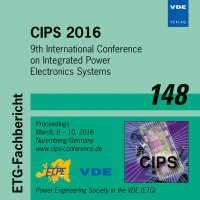Enhancement of the partial discharge inception voltage of DBCs by adjusting the permittivity of the encapsulation
Conference: CIPS 2016 - 9th International Conference on Integrated Power Electronics Systems
03/08/2016 - 03/10/2016 at Nürnberg, Deutschland
Proceedings: CIPS 2016
Pages: 5Language: englishTyp: PDF
Personal VDE Members are entitled to a 10% discount on this title
Authors:
Bayer, Christoph Friedrich; Waltrich, Uwe; Soueidan, Amal; Schneider, Richard; Baer, Eberhard; Schletz, Andreas (Fraunhofer IISB, Erlangen, Germany)
Abstract:
Partial discharge (PD) is a key degradation mechanism of insulating materials such as ceramics in power modules. Among others, this is due to high voltages under operation of the modules. PD is due to high electric field strengths in the vicinity of the edge of the metallization of the insulating substrate e.g. direct copper bond (DCB). This paper focusses on the encapsulating fluid or gel that influences the partial discharge inception voltage (PDIV) due to its electrical properties. Simulations of the electric field strength were carried out to analyze the effect of the permittivity of the covering fluid. The simulations show a reduction of the electric field strength at the edge of the metallization with increasing relative permittivity. Phase resolved partial discharge (PRPD) measurements were carried out on different ceramic layouts using two inert fluids with different relative permittivity. The results show higher PDIVs for the higher permittivity of the encapsulating liquid. Further investigations were done to study the effect of aging on the electrical properties of a commonly used silicone gel for covering power devices.


